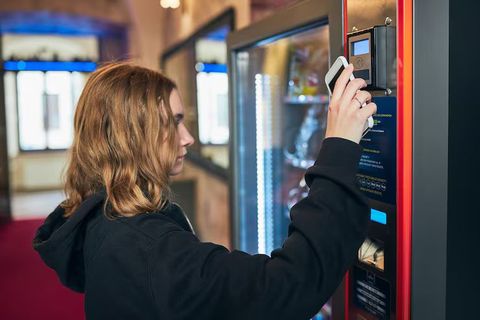AI Translator Guide: Explore Key Features, Benefits, and Practical Usage
AI translators are technology-based language interpretation tools designed to convert text, speech, or images from one language into another. They exist to help individuals and organizations communicate across linguistic barriers, especially as global interaction continues to increase. AI translation works through machine learning, natural language processing (NLP), and neural networks that learn from vast datasets to better understand sentence structure, context, and tone.
These translators are increasingly used for education, business communication, travel, content creation, and accessibility. They eliminate the need for manual translation in many everyday tasks and make multilingual communication more convenient.

Importance
Artificial intelligence translators have become highly relevant in the digital age. Their importance lies in:
-
Language accessibility: Helping users understand information written or spoken in unfamiliar languages.
-
Global collaboration: Making communication easier for students, professionals, and international teams.
-
Content expansion: Supporting multilingual content for blogs, research papers, websites, and media.
-
Learning assistance: Helping learners grasp new vocabulary, pronunciation, and sentence structure.
-
Real-time communication: Enabling conversations across languages through text, audio, or video.
AI translators solve major communication barriers, allowing cross-cultural interaction with fewer misunderstandings. Students, educators, travelers, researchers, businesses, and content creators all benefit from quick and consistent translation output.
Recent Updates
The year 2024–2025 has seen notable growth in AI translation capabilities. Some recent changes include:
-
Improved neural network models (2024): More advanced large language models now understand dialects, technical terms, and tone better.
-
Multimodal translation (2025): AI tools now interpret not only text, but also images, documents, and handwriting.
-
Real-time conversation mode (2024): Faster processing allows live multilingual conversation through voice recognition.
-
Offline translation upgrades (2025): Many tools offer more accurate translation even without internet access.
-
Integration with productivity platforms (2025): AI translation functions now appear in document editors, meeting tools, and messaging platforms.
Most modern systems focus on accuracy improvement, cultural context, and reduced mistranslation in sensitive topics.
Laws or Policies
AI translators are influenced by data privacy policies and digital transparency regulations worldwide. Key areas affected include:
-
Data Protection Laws: Regulations like GDPR in Europe and CCPA in California ensure user text and voice data is protected.
-
Copyright Regulations: Translated content remains bound by intellectual property rules; AI tools must handle copyrighted text responsibly.
-
Government Digital Communication Programs: Some regions encourage multilingual access to public information using AI-assisted translation tools.
-
Accessibility Standards: Regulations promoting inclusivity support AI tools that help individuals with reading or language challenges.
Many countries emphasize transparent data use and secure handling of user information to ensure AI translation remains safe and ethical.
Tools and Resources
Several tools and platforms support AI translation for everyday and professional use. Examples include:
-
Text-to-text translators: AI systems that convert written sentences between languages.
-
Speech-to-text and speech-to-speech tools: Allow real-time conversation in different languages.
-
Translation plugins in browsers and word processors: Enable automated multilingual content reading.
-
Language learning platforms with AI translation support: Provide vocabulary suggestions, grammar correction, and pronunciation help.
-
File and image translation tools: Convert scanned documents or screenshots into readable translated format.
These tools help users translate efficiently across different mediums for study, communication, or reference.
Example Table – Types of AI Translators and Their Usage
| Translator Type | Primary Usage | Output Format |
|---|---|---|
| Text-Based AI Translator | Document and message translation | Text |
| Voice-Recognizing Translator | Live conversation support | Voice + Text |
| Image/Document Translator | Text recognition from photos and PDFs | Text |
| Multimodal AI Translator | Combined text, image, and voice tasks | Mixed Input/Output |
FAQs
How accurate are AI translators?
Accuracy varies depending on language pairs and context. Modern AI systems handle common sentences well but can still struggle with idioms, slang, and complex technical language.
Can AI translators be used for academic or research work?
Yes, but users should verify translations to ensure precision, especially for critical terms or research-specific vocabulary.
Do AI translators work offline?
Some tools offer offline modes, though accuracy may be slightly lower without online language model updates.
What languages can AI translation support?
Most tools support 50–130 languages, with expanding coverage every year as new models are trained.
Can AI translators replace human translators?
AI translators assist with general communication, but human translators remain essential for creative, legal, literary, or culturally nuanced content.
Conclusion
AI translators have become valuable tools in a multilingual world. They provide convenient access to information across languages, support international collaboration, and enhance learning. With advancements in neural networks, multimodal input, and real-time communication features, AI translation continues to evolve rapidly.
Regulations ensure safe data usage, and many resources are available for users to explore this technology responsibly. Understanding how AI translators work and keeping up with new developments allows learners, professionals, and everyday users to communicate more confidently across linguistic boundaries.






